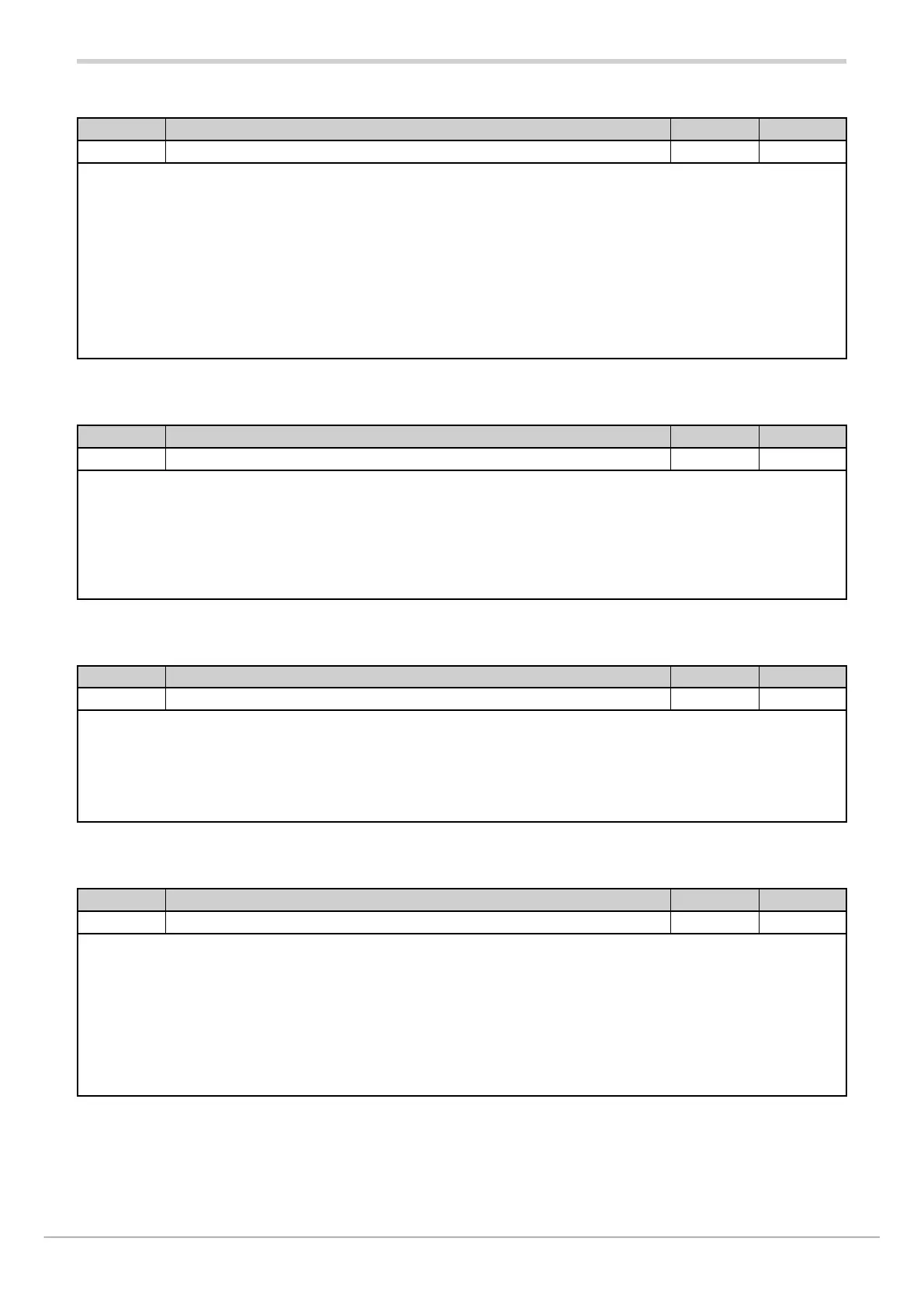80209C_MHW_850-1650-1850_02-2020_ENG_pag. 158
4.23.6. RESE - Selecting the Reset timer command
Acronym Scrolling message Submenu Attributes
rESE TIMER.1 (o TIMER.2) TIMER RESET TIMER R W
The parameter shows and sets the “object” that commands Reset of the timer
Unit of measurement: -
Options: AUT.RS = For autoreset with timer in Stop
IN.DIG = From digital input with T.RST function
ALRM1 = From alarm 1
ALRM2 = From alarm 2
ALRM3 = From alarm 3
ALRM4 = From alarm 4
AL.HB = From alarm HB
SERIA = From serial
4.23.7. RES.T - Defining the timer reset command logic
Acronym Scrolling message Submenu Attributes
rES.t TIMER.1 (o TIMER.2) LOGIC TYPE OF TIMER RESET TIMER R W
The parameter shows and sets the type of logic used to command the timer reset.
With positive logic, the timer is reset with “object” active.
With negative logic, the timer is reset with “object” inactive.
Unit of measurement: -
Options: POSIT = Positive logic
NEGAT = Negative logic
4.23.8. BAND - Band for timer count
Acronym Scrolling message Submenu Attributes
BAND TIMER.1 (o TIMER.2) SYMM SP BAND WHERE TIMER IS ACTIVE TIMER R W
The parameter shows and sets the symmetrical band around the setpoint within which the timer count is on.
The parameter appears if the parameter F.tiM = STABL
If the parameter equals “0.0” the count is immediate as soon as the setpoint is reached for the first time.
Unit of measurement: % of full scale of main or auxiliary input
Options: 0.0...25.0
4.23.9. END - Selecting the function activated at end of count
Acronym Scrolling message Submenu Attributes
End TIMER.1 (o TIMER.2) FUNCTION WHERE TIMER IS OVER TIMER R W
The parameter shows and sets the function that is activated when the timer ends the count.
The parameter appears if the parameter F.tiM = ST.STP or STABL.
Unit of measurement: -
Options: NONE = None: control continues with actual setpoint
OFF = Software off
if the Multiset function is enabled:
SP1-2 = Change setpoint SP1/SP2

